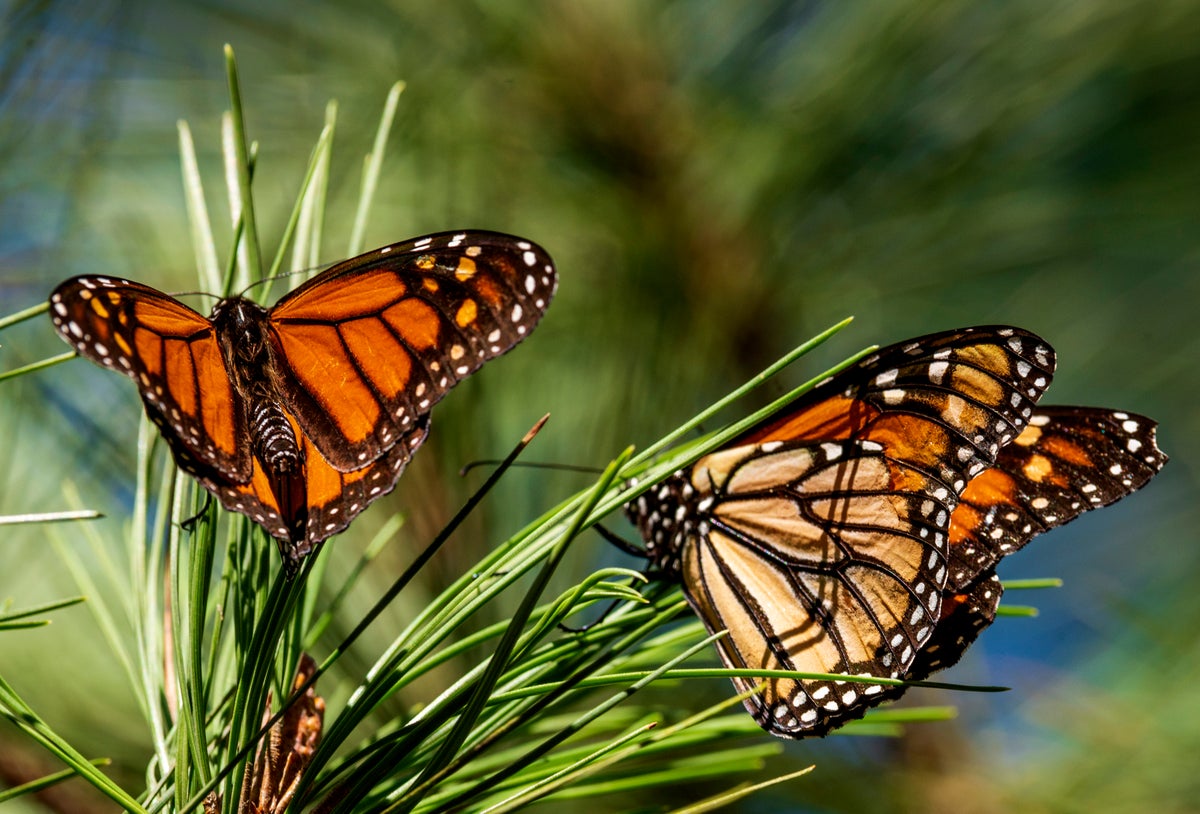
The population of western monarch butterflies wintering along the California coast has rebounded for a second year in a row after a precipitous drop in 2020, but the population of orange-and-black insects is still well below what it used to be, researchers announced Tuesday.
Volunteers who visited sites in California and Arizona around Thanksgiving tallied more than 330,000 butterflies, the highest number of these insects counted in the last six years. It was a promising rebound after the annual winter count in 2020 recorded fewer than 2,000 butterflies. In 2021, the number recorded was 247,000.
“I think we can all celebrate and this is really exciting,” said Emma Pelton, a conservation biologist at the Xerces Society, a nonprofit environmental organization that focuses on the conservation of invertebrates. “We were all so relieved last year when we had about 250,000 butterflies, and to see that number tick up even modestly this year it's really a good sign that we've got a second chance.”
Pelton said it’s not clear why the population has rebounded but one explanation could be that eastern monarch butterflies, which tend to spend the winter in Mexico, could be mixing with their western counterparts.
“Some of that kind of leakage could be occurring and I don’t think we fully understand the system enough to say what it is," she said. “But I think one thing it’s not is that all is well or that we all made human actions that magically made it all better.”
The population is still far below what it was in the 1980s, when monarchs numbered in the millions.
Scientists say the butterflies are at critically low levels in western states because of destruction to their milkweed habitat along their migratory route as housing expands into their territory and use of pesticides and herbicides increases.
Along with farming, climate change is one of the main drivers of the monarch’s threatened extinction, disrupting an annual 3,000-mile (4,828-kilometer) migration synched to springtime and the blossoming of wildflowers.
Western monarch butterflies head south from the Pacific Northwest to California each winter, returning to the same places and even the same trees, where they cluster to keep warm. The monarchs breed multiple generations along the way for thousands of miles before reaching California where they generally arrive at the beginning of November. Once warmer weather arrives in March, they spread east of California.
On the eastern side of the Rocky Mountains, another monarch population travels from southern Canada and the northeastern United States across thousands of miles to spend the winter in central Mexico. Scientists estimate the monarch population in the eastern U.S. has fallen about 80% since the mid-1990s, but the drop-off in the western U.S. has been even steeper.
The western monarch count is conducted by trained volunteers over several weeks around the Thanksgiving holiday. It dates back to 1997 and has observed a loss of more than 95% of a population that according to earlier studies once numbered in the low millions.
This year the insects' wintering habitat along California's central coast was also battered by heavy rains and volunteers reported more monarchs blown from their clusters and vulnerable to the cold, wet conditions and predation, the Xerces Society said in a statement.
The group normally also conducts a second count after the New Year. This year's results will be announced in February and shed light on how much winter storms impacted the butterflies, said Isis Howard, an endangered species conservation biologist with the Xerces Society.
Howard said the follow-up New Year’s counts usually show a 30% to 50% decline in butterflies from the Thanksgiving count.
“Because the storms were so intense and so back-to-back this year, it seems reasonable to assume that there might be increased mortality this winter, leading to a smaller population that’ll kick off the breeding season this next spring and summer," she said.







